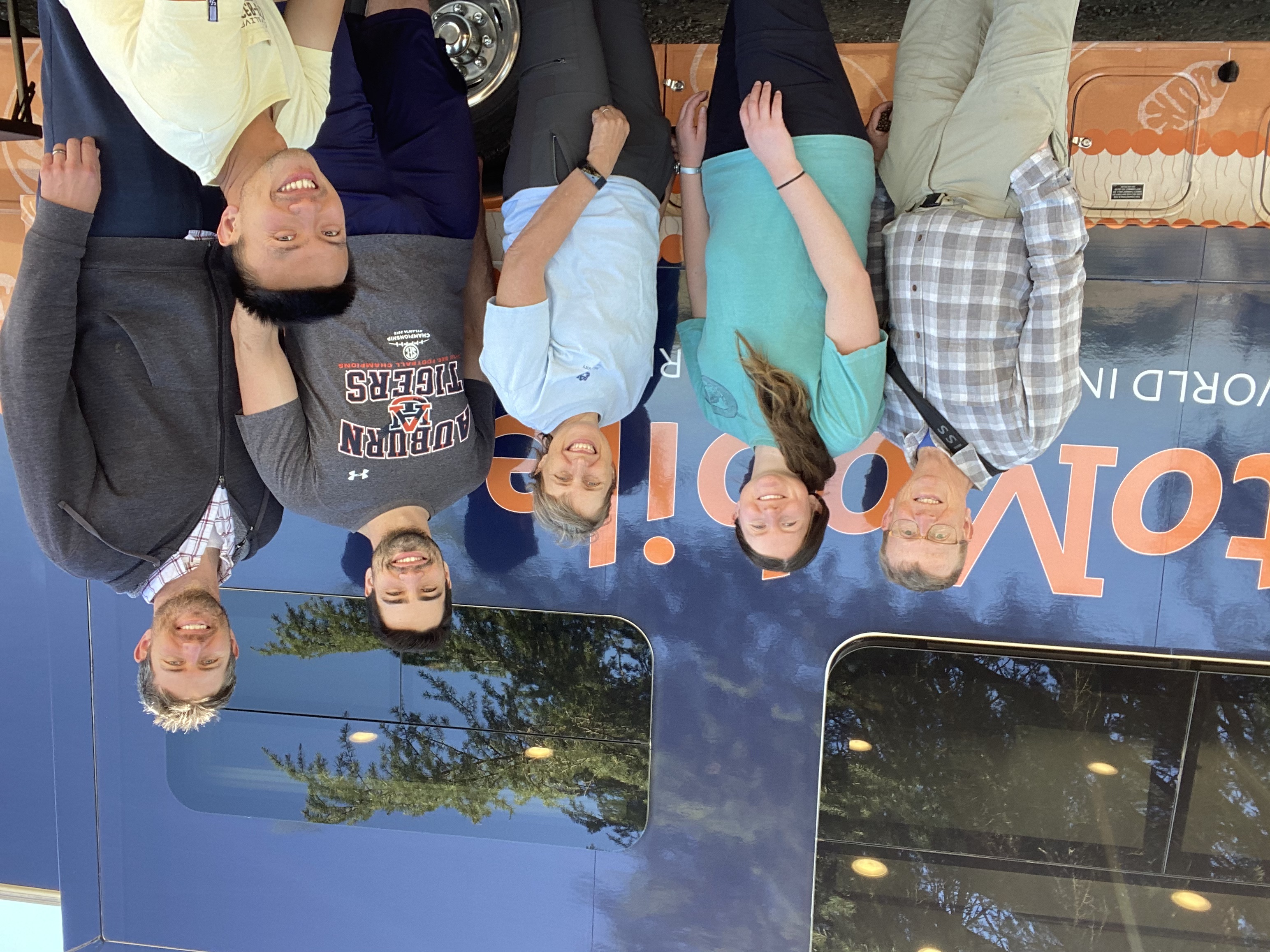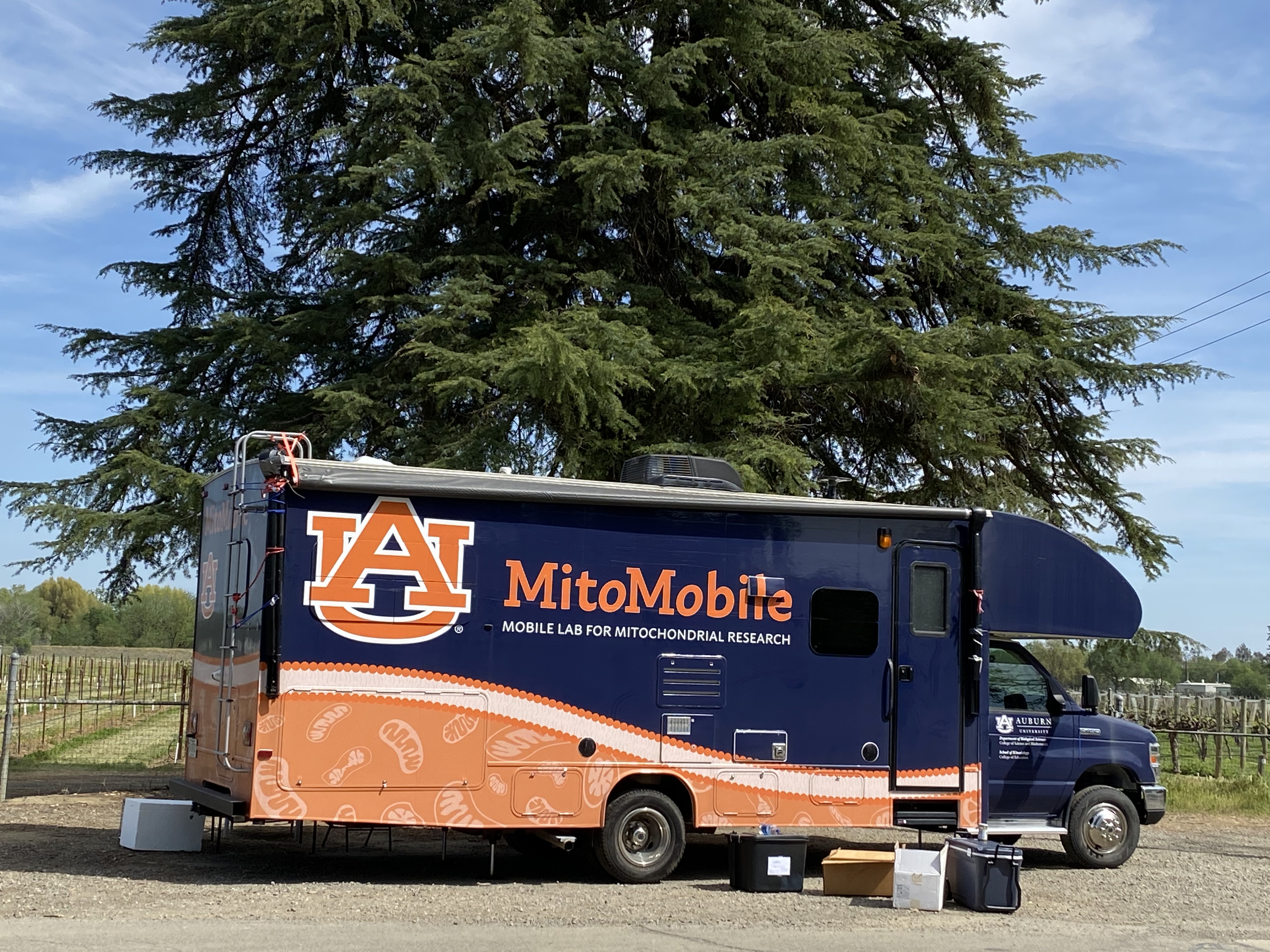COSAM News Articles 2024 05 Auburn biologists publish first work on avian migration conducted in the AU MitoMobile
Auburn biologists publish first work on avian migration conducted in the AU MitoMobile
For Wendy Hood and Geoffrey Hill in Biological Sciences, Andreas Kavazis in Kinesiology, and their team, Emma Rhodes, Paulo Mesquita, and Jeff Yap, traveling the country to unlock the mystery of mitochondria in migrating aviary species has allowed them to make a significant contribution to research in an area that has not been investigated before. The first publication conducted in the AU MitoMobile van is featured in Scientific Reports, “Flexibility underlies differences in mitochondrial respiratory performance between migratory and non‑migratory White‑crowned Sparrows (Zonotrichia leucophrys).”
Mitochondria drive several vital biological functions. Think of them as the power plants that create the energy needed to support virtually all of the body's functions.
“This is the first publication to show that change in the performance of the mitochondria is associated with a massive increase in the energy demand of long-distance migratory flights,” said Hood, a professor in the Department of Biological Sciences at Auburn University.
“Migratory birds can carry a larger capacity of oxygen and nutrients,” she said. “The electron transport chain then must change in ways that allows the birds to process the incoming nutrients and oxygen to produce the energy they need for long flights.”
The White-crowned Sparrows were not the first choice for the research project by the Hood Lab at Auburn University.
“At first, we looked at migratory Gray catbirds and non-migratory Northern mockingbirds,” she said. “While the animals are relatively closely related, they have very different behaviors, which obscured the patterns we predicted to find.”
The catbirds are much more relaxed than the high-energy, territorial mockingbirds.
“We relied on our knowledge of birds throughout North America to pick the right group of birds,” she explained.
The team settled on White-crowned Sparrows.
Within the White-crowned Sparrows, there are distinct subspecies that vary in whether or not they migrate. Gambel’s sparrows are migratory birds that travel from California to Alaska, while Nuttall’s sparrows are non-migratory birds that reside along the California coast.
“Our team looked at a wide range of mitochondrial functions, including morphology and dynamics,” said Hood.
Both the Scientific Reports paper and ongoing work evaluate the mechanisms by which mitochondria make adjustments to support changes in energy production.
Hood is particularly excited about their results describing mitochondrial fission and fusion. “Fission and fusion of dynamics removes damage and improves capacity of the mitochondria, but it has rarely been studied in wild birds,” she shared. This work will be submitted for review and consideration for publication later this month.
The AU MitoMobile, a mobile physiology laboratory, allowed the team to collect specimens before and after migration states.
“We drove the AU MitoMobile to California in April 2021,” Hood shared. “In Davis, California, we selected Gambel’s sparrows as they prepared to fly north.”
“Then, in Sept. 2021, we caught Gambel’s sparrows in a high mountain pass just outside Yosemite National Park as they were migrating south,” she added. “On the same trip, we collected Nuttall’s sparrows after they bred. Afterward, in Dec. 2021, we collected both subspecies in a non-migratory state.”
Hood and Rhodes presented this work at a scientific meeting in Seattle in January and will present it again in Prague, Czech Republic, this summer. They expect to use the AU MitoMobile to conduct research far beyond the Plains in the near future.
Latest Headlines
-
02/12/2025
-
02/11/2025
-
02/10/2025
-
01/30/2025
-
12/03/2024




